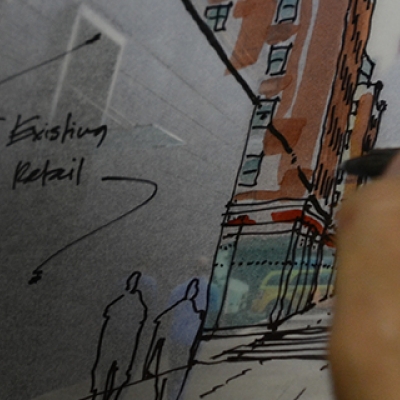


Island Press Staff Picks
By Admin, Jason Leppig / On September 19th, 2012
This week's pick is from the Managing Editor of CAKE, Livia Kent:

#ForewordFriday Planning as if People Matter
By Admin / On September 7th, 2012
The environmental justice movement is closely tied to urban planning and development. But, while planners and urban designers have made great strides in embracing the sustainability movement, social justice issues have not been getting the same attention. Of the three "e"s of sustainable planning—environment, economics, and equity—equity is the one most often left behind.

#ForewordFriday Green Cities of Europe
By Timothy Beatley / On June 8th, 2012
You'll find some inspiration for your city in this new book by Tim Beatley and this week's selection for #forewordFriday. Enjoy!

Imagination + Visualization = Approval?
By Darrin Nordahl / On June 1st, 2012
Austin’s streetcar proposal has been burning up the transit headlines recently, and for good reason. After years of planning, the first leg of the route has finally come into focus, ready for approval.
But there is contention. Not so much with the route choice, but whether Austin needs a streetcar in the first place. As to be expected, most of the objection is coming from motorists; folks who simply cannot imagine themselves using transit.

It Is a Matter of Scale or What is the Connection between Brain Size and Sprawl
By Admin / On September 26th, 2011
Scale is fundamental to urban design. If you get it right, and achieve a well-proportioned space between buildings, you have a sound basis to build upon. Even if the architecture is far from perfect, the public realm you create can be decent and comfortable. If you get the scale wrong and your master plan is built, even the most lustrous architecture won’t remediate the failure of space-making; people might still use it for utilitarian reasons (think the parking lot of a Wal-Mart), but will not enjoy it.

Reduced or Not, the Mortgage Interest Deduction Can Help Fix Sprawl
By Galina Tachieva / On September 19th, 2011
As of late, the mortgage interest deduction (MID), a tax break many Americans have become accustomed to, has become the focus of much debate and controversy. It first became the subject of heated discussion when President Obama’s debt commission suggested its reduction. They argued that in addition to reducing deficits, such reform could also help slow the growth of sprawl.

Smithsonian Institution Greening Greater Washington seminar
By Admin / On September 7th, 2011
Island Press partnered with the Smithsonian Institution for a Greening Greater Washington Seminar featuring Island Press author Timothy Beatley, author of Biophilic Cities, and Christopher Leinberger, author of The Option of Urbanism.

The Role of Wonder in Planning
By Timothy Beatley / On February 13th, 2009
I don’t think we talk enough about wonder in planning schools today. That sense of fascination, awe, of being spellbound by the immensity, delicacy, beauty of something, is an essential ingredient of our human spirit, and to making life joyous and meaningful. Yet it goes virtually undiscussed in professional planning programs, with few insights offered about how to go about designing and planning places and communities that provide these experiences. Planners are a wonkish bunch, more likely to wax on about special use permits, density bonuses, and sliding-scale zoning.

The Photosynthetic City
By Peter Newman / On February 10th, 2009
The potential to grow energy and provide food and materials locally will become part of urban infrastructure. Photosynthetic processes in cities will reduce their ecological impact through replacing fossil fuels and can bring substantial ecological benefits through their emphasis on natural systems.

